5 Berry-licious Shrubs to Plant Now for Winter Interest
http://decor-ideas.org 11/10/2013 00:40 Decor Ideas
Fall and winter shrubs usually call to mind colorful autumn leaves or scented evergreen bushes. But winter berries can add just as much visual interest and color to your landscape in the winter. These shrubs are often grown for their late-season interest, among other benefits.
Take a look at these five beautiful berry-bearing shrubs and get inspired to reconsider your winter garden design.
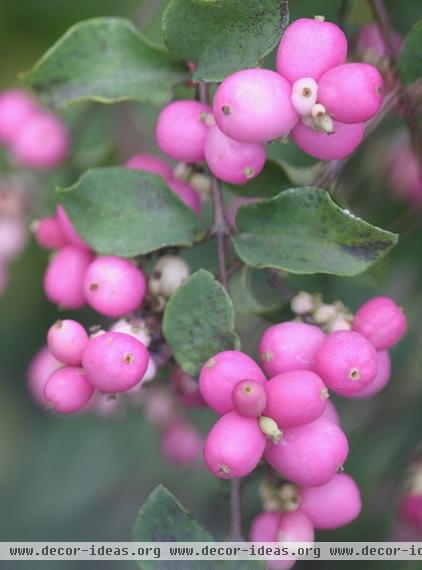
Coralberry
(Symphoricarpos × doorenbosii 'Kordes' Amethyst)
Abundant pinkish purple berries are the star of coralberry, a shrub native to North America. It works well in informal woodland gardens, and its suckering habit makes it a great choice on a slope to ward off erosion. As a bonus, it's known to be deer resistant, too.
Where it will grow: USDA zones 3 to 7 (find your zone)
Water requirement: Medium moisture; well-drained soil
Light requirement: Full sun to partial shade
Mature size: 3 to 5 feet tall and wide

Beautyberry
(Callicarpa americana)
The aptly named beautyberry is an American native whose insignificant flowers produce amazing purple berries. While the berries are stunning in fall, especially after leaf drop, hungry birds will likely devour them by early winter. Group several shrubs together for maximum impact.
Where it will grow: USDA zones 6 to 10
Water requirement: Medium to moist, well-drained soil
Light requirement: Full sun to partial shade
Mature size: 6 to 8 feet tall and 3 to 4 feet wide
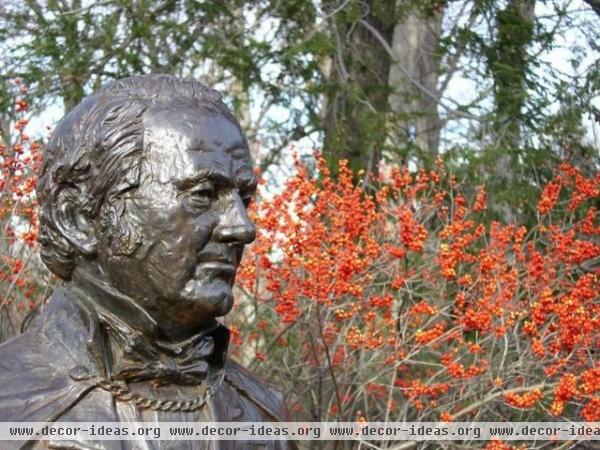
Winterberry
(Ilex verticillata 'Afterglow')
Often seen in indoor winter flower arrangements, the heavily berried branches of winterberry look stunning in the landscape as well. Large, dark and glossy green leaves turn yellow in fall before dropping, allowing the red berries to steal the show. Keep in mind that you must plant at least one male winterberry to produce the berries — one male will pollinate six to eight females. Ask your local nursery how to tell which is which.
Where it will grow: USDA zones 3 to 9
Water requirement: Medium to wet soil
Light requirement: Full sun to partial shade
Mature size: 3 to 6 feet tall and 3 to 9 feet wide
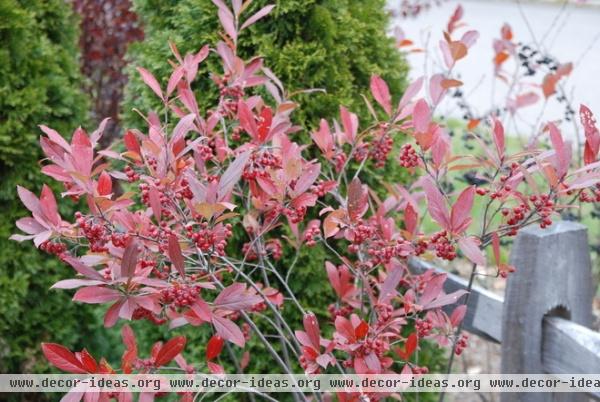
Chokeberry
(Aronia arbutifolia 'Brilliantissima')
Chokeberry is a lovely shrub that produces white to light pink flowers, followed by bright red berries that persist well into winter. This particular cultivar has stunning red fall foliage, hence the cultivar name Brilliantissima. The common name originates from the fact that the berries are technically edible, but so tart that they may cause choking. However, you can turn them into a tasty jam or jelly.
Where it will grow: USDA zones 4 to 9
Water requirement: Medium moisture; well-drained soil
Light requirement: Full sun to partial shade
Mature size: 6 to 8 feet tall and 3 to 4 feet wide
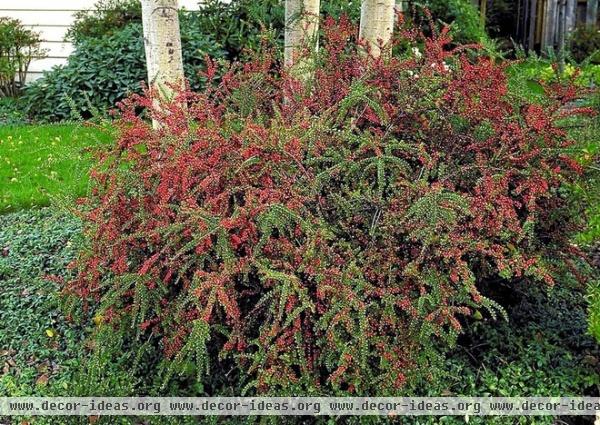
Rock cotoneaster
(Cotoneaster horizontalis var. perpusillus)
Perfect for rock gardens, cotoneaster is a sprawling, low-growing shrub with glossy dark green leaves that turn burgundy red in fall. The bright, scarlet berries appear in midsummer and last through fall.
Where it will grow: USDA zones 4 to 7
Water requirement: Medium moisture; well-drained soil
Light requirement: Full sun to partial shade
Mature size: 1 foot to 2½ feet tall and 5 to 8 feet wide
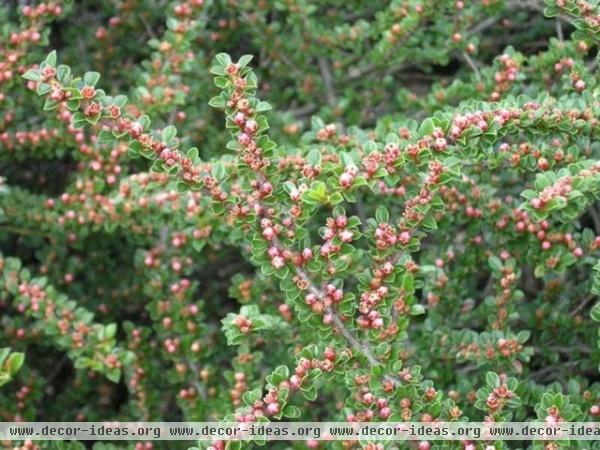
Here's a close-up shot of rock cotoneaster's berries. For dramatic effect position it against a light-colored backdrop so that the sculptural habit of intertwining branches (shown here) will be showcased. The dense branches provide protection for birds.
Tell us: Do you have any plants known for their showy berries? Share photos in the Comments below.
More: 7 Container Plantings to Bring Winter Gardens to Life
Related Articles Recommended












